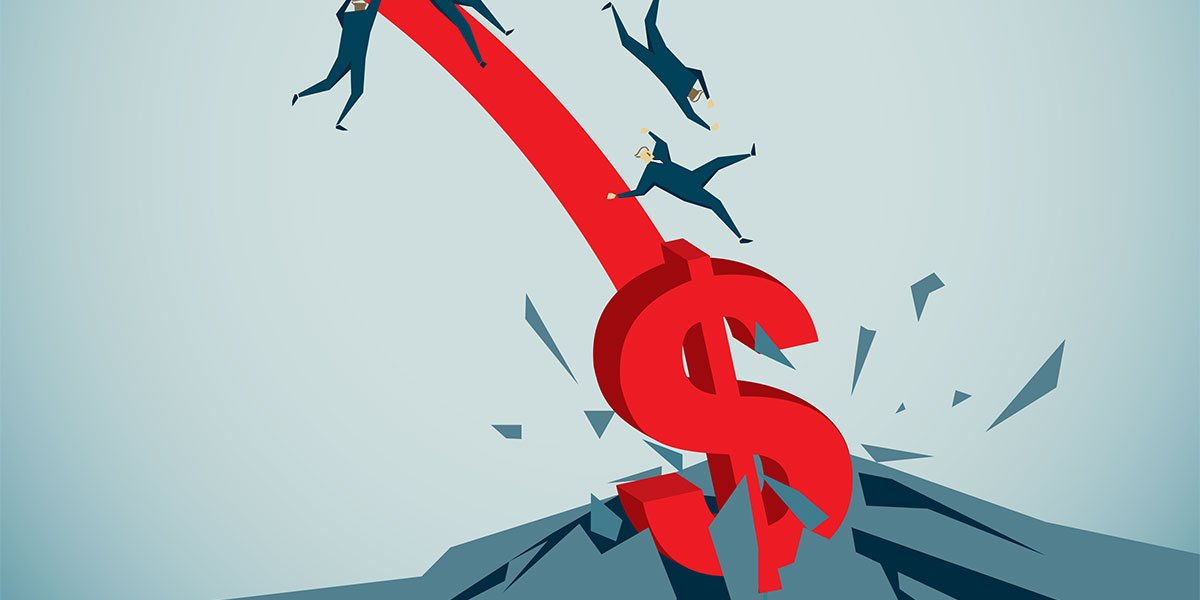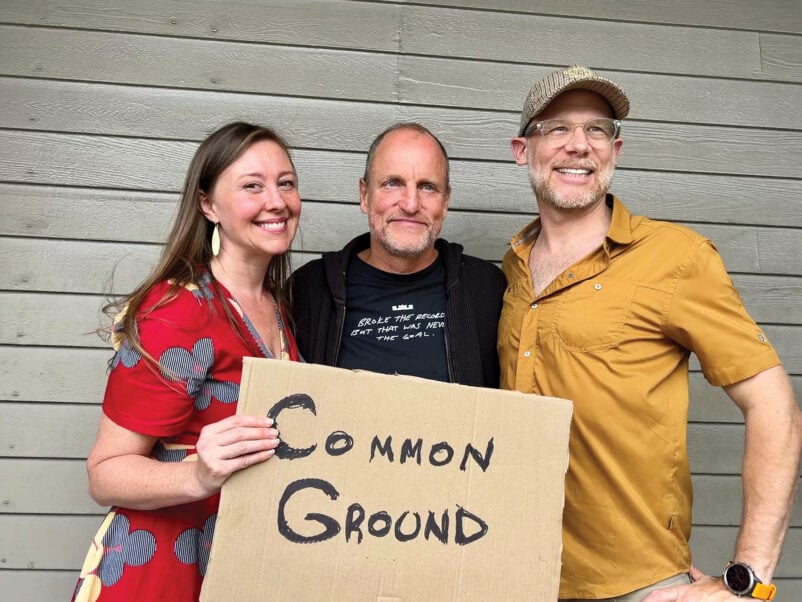Amid the banking crisis of 2008, the American motor industry was an afterthought. In December 2008 a truculent Congress voted down an emergency aid package for American automakers. But neither President Bush nor incoming president Obama thought they could let GM and Chrysler fail, so these once great powerhouses of American industrialism were rescued by the diversion of funds originally allocated to the bank bailout. By 2013 both were profitable. Chrysler celebrated its recovery in the way that corporate America does, by booking a slot to run a headline-grabbing commercial during the Super Bowl in February 2014. The spot was written, directed and acted in person by Bob Dylan, the wizened bard of counterculture Americana. Against a backdrop of Hopperesque noir, Dylan delivered a striking piece of high-caliber nationalist kitsch:
“Is there anything more American than America? ’Cause you can’t import original. You can’t fake true cool. You can’t duplicate legacy. Because what Detroit created was a first and became an inspiration to the rest of the world. Yeah, Detroit made cars. And cars made America.”

If the American auto industry was back from the dead, however, the same could not be said for Motor City. Since its heyday in the postwar era, Detroit had long been in decline. At its peak it had a population of 1.8 million, of whom 500,000 were African American. Hit by deindustrialization and white flight following the 1967 riots, the population of the urban core of Detroit had by 2013 shrunk to 688,000, of whom 550,000 were African American. With most of its factories closed, Detroit was caught in a death spiral of unemployment, racial disadvantage and predatory financing. By 2013, 36 percent of Detroit’s population was living below Michigan’s far from generous poverty line. The unemployment rate was 18 percent. Housing was a crisis. In 2005, 68 percent of all the mortgages in Detroit were subprime. As the crisis cut a swath across America, 65,000 homes in Detroit were foreclosed. More than half were considered of so little value that they were simply abandoned, joining a total stock of 140,000 blighted properties. Trying to contain the contamination effect, the city demolished entire tracts.
The city, saddled with debts of between $18 billion and $20 billion, appointed an emergency manager who in June 2013 filed for bankruptcy. It was the biggest city bankruptcy in American history.
Detroit was an extreme and much publicized case, but it was not alone. Jefferson County, Alabama, which included the steel city of Birmingham, had filed for bankruptcy in 2011. In 2012, it was Stockton and San Bernardino, Calif. These places were far from being carbon copies of northern postindustrial Detroit. But taken together, they symbolized the bewildering turn from American Dream to American nightmare.
For most of Obama’s first term, however, it wasn’t the worries of such places that preoccupied economic policy. It was the fight to save Wall Street and global finance. But in the 18 months following Obama’s reelection in November 2012, a sense of American malaise reached a new pitch. With the crisis no longer dominating the horizon, the concerns about America’s long-term trajectory, the sense that things weren’t “normal,” came roaring back.

Economist Larry Summers gave voice to the anxiety in a speech at the International Monetary Fund in November 2013. His subject: the recovery and its deeply disappointing pace. American policy makers might congratulate themselves that they were leading the Europeans out of the recession, and they were right to do so. But, Summers warned, America’s recovery was the slowest on record. In 2009 and 2010 the recovery had started strongly, but since then, economic growth had relapsed. Where was the “bounce”? What was wrong?
The conventional view was that the United States was suffering from the aftereffects of an exceptionally severe financial crisis; it would take time for markets and balance sheets to recover. It was precisely to avoid such hangovers that economists like Carmen Reinhart and Ken Rogoff argued for financial restraint. If you avoided the credit bubble and the excessive upswing, you might avoid the bust. Keynesians like Nobel-prize winning economist Paul Krugman, on the other hand, insisted that the recovery had been needlessly slowed by a premature shift to austerity. Fed chair Ben Bernanke’s quantitative easing (QE) could compensate to some degree, but it could not make up for the shortfall in aggregate demand.
But what if the inadequate recovery was not simply the result of policy failure, Summers asked. What if there was a deeper problem, a chronic shortfall in the demand for investment relative to the supply of savings, resulting in a sustained condition of “secular stagnation”?
Summers invited his audience to look back to the period before the crash. In retrospect, everyone agreed that monetary policy before 2008 had been “too easy…there was a vast amount of imprudent lending going on.” But if that were the case, one would have expected the American economy to have been on a dramatic bull run. It had not. Despite the excesses of the housing boom, growth up to 2008 had been average. When compared with the 1950s and ’60s, it had been slow. So imagine, Summers continued, “how satisfactory” the performance of the U.S. economy would have been in the early 2000s “in the absence of a housing bubble, and with the maintenance of strong credit standards.” It would have been just as disappointing as the current recovery was turning out to be. It might have been worse.
To address the chronic shortfall in investment, Summers advocated a new era of government activism. A burst of public investment would rebuild America’s infrastructure and address the more fundamental questions posed by Detroit. Physical reconstruction would be a means to restore a sense of national coherence and national pride. Summers was calling for what Obama’s administration had failed to deliver, a drive to unify American society around a program of investment-driven growth and comprehensive modernization. The efforts at stimulus in 2009 and 2010 had not been negligible. But they had been hedged by the anxieties of the moment, resistance from Congress, an aggressive mobilization of right-wing opinion and Larry Summers’ own nervousness about losing standing with Democratic political operatives. The result was a recovery that was not just slow but deeply inequitable.
Devastating statistical data completed the picture. In October 2013, two French economists, Emmanuel Saez and Thomas Piketty, published the latest release of a long-running project on American inequality. They calculated that of the growth generated by the economic recovery since 2009, 95 percent had been monopolized by the top 1 percent. That tiny fraction of the population saw their incomes rebound from the trough of the recession by 31.4 percent. Meanwhile, 99 percent of Americans had experienced virtually no gain in income since the crisis. The data were subsequently revised to show a less extreme disproportion, but in 2013 the numbers caused a sensation. Whereas a tiny elite were doing extremely well, for average Americans the secular stagnation thesis that Summers advanced as a tentative academic hypothesis was simply the reality of the last 40 years.
Could the national economy any longer be plausibly presented as a project common to all Americans?
See all Power 100 issue content here.
Since America’s bicentennial in 1976, productivity growth and the returns to labor in the form of household incomes had starkly diverged. The average American shared only to a small degree in national economic growth. Almost all of its benefits were being monopolized by the highest paid and those wealthy enough to own significant portfolios of financial assets. The financial crisis of 2008 had revealed how national economic policy was subordinated to the needs of giant transnational banks. Could the national economy any longer be plausibly presented as a project common to all Americans?
A year into his second term as president, President Obama visited a community center in Ward 8, an African American section of Washington, D.C., to make a major speech about America’s social crisis. He described the “daily battles” of ordinary Americans struggling against the “relentless decades-long trend” of income inequality. “Our levels of income inequality rank near countries like Jamaica and Argentina.” Half of all Americans would experience poverty during at least one period of their lives. “The combined trends of increased inequality and decreasing mobility pose a fundamental threat to the American Dream, our way of life and what we stand for around the globe.”
The distress of cities such as Detroit was clearly shocking. But, as Obama emphasized, America’s crisis was not confined to predominantly African American communities. Across the country, class, not race, was the most important determinant of an American’s life chances, and the big story of his second term was rural white working-class despair. It was Appalachia, held back by structural change, educational failure and immobility, that lurched into the headlines. At its most extreme, this lethal combination came to be symbolized by an epidemic of drug addiction, fed by cheap heroin from Mexico and rampant opioid abuse. Among white Americans, deaths from overdose increased by 297 percent between 2010 and 2014. Life expectancy among working-class white Americans had been decreasing since the early 2000s.
The crisis was undeniable. The question was what to do about it. When the left wing of the Democratic Party had taken up the issue of inequality in the 1990s, the standard diagnosis had been technical and economic. Globalization had pushed top incomes up and lower incomes down. Imports of cheap manufacturers opened up by NAFTA and Chinese accession to the WTO benefited consumers, but depressed wages and robbed blue-collar Americans of secure manufacturing jobs and the health and retirement benefits that went with them. By 2013, experts close to the American labor movement estimated that the trade deficit with China had cost 3.2 million jobs and the competition of low-wage foreign labor had depressed the wages of the 100 million American workers without a college education by $180 billion.
These were substantial effects, but in an economy with a workforce of more than 150 million people and a wage bill of more than $7 trillion, they were nowhere near large enough to explain the surge in inequality. So the globalization argument was supplemented by a thesis of skills-biased technological change. This theory posited that the trend in technological development had offered disproportionate benefits to those with higher skills across the American economy, whether exposed to trade or not.
The standard reformist response had been to advocate for a federal and state role in improving education, providing affordable access to community colleges and offering trade-adjustment assistance. But after 20 years, given the mounting inequality and declining mobility, these measures could hardly be deemed a success. Between 1977 and 2014 the share of national income going to the top 1 percent before taxes and benefits had risen by 88.8 percent. Nor was this by accident. Every conceivable source of leverage and influence had been exploited by those with money to maximize their advantage. As billionaire investor Warren Buffett famously put it: “Actually, there’s been class warfare going on for the last 20 years, and my class has won.”
For those at the bottom, none of this was news. Opinion polls, especially those commissioned by the right wing, had for a long time been recording the profound resentment among the American population at the way that both the economy and the political system seemed to be engineered to their disadvantage. These views were often dismissed as conspiracy theories, and often deservedly so—online “news” sources such as Breitbart provided a platform for racist and anti-Semitic rhetoric. But if one stepped back from the poisonous language and crude logic, the assumptions that inequality was “systemic” and that “the system” was rigged against working-class Americans were not paranoid but simply realistic.
From a radically different perspective and with completely different intent, the American Left had always made the case. Indeed, it was this radical skepticism that set them apart from the liberal centrists who dominated the Democratic Party. The Left did not trust the institutions. It did not believe that electing well-intentioned products of elite colleges to steer a machine designed to favor the wealthy offered any hope of fundamental change. It was the conversion of centrist liberal commentators to a more radical view that marked how serious the sense of the crisis had become.
In a remarkable series of New York Times columns, economist Paul Krugman adopted a dark view. “What do the pre- and post-crisis consensuses have in common?” Krugman asked in December 2013. “Both were economically destructive: Deregulation helped make the crisis possible, and the premature turn to fiscal austerity has done more than anything else to hobble recovery. Both consensuses, however, corresponded to the interests and prejudices of an economic elite whose political influence had surged along with its wealth.”
Robert Reich, a Clinton-era labor secretary, underwent a similar disillusionment. What Reich now recognized was a “critically important phenomenon: the increasing concentration of political power in a corporate and financial elite that has been able to influence the rules by which the economy runs….The problem is not the size of government but whom the government is for.”
In January 2014 Reich went to Congress to testify. “I’ve served in Washington, and know how difficult it is to get anything done unless the broad public understands what’s at stake and actively pushes for reform. That’s why we need a movement against economic inequality and in favor of shared growth—a movement on a scale similar to the Progressive movement at the turn of the last century….”
Unlike liberal progressives, the libertarian right wing in the United States had never doubted that government was a problem. Indeed, they had always vociferously argued that it was the entire problem. America’s downward slide, the long-running trends toward inequality and oligarchy, the disaster of 2008, the lopsided recovery from it, were all symptoms of the profound corruption brought about by big-government meddling and its capture by interest groups.
Of course, the low top tax rates that had helped to create that outcome of extreme disparity were set by a Republican Congress. Nonetheless, a large part of the American Right agreed with Obama that the American Dream was in trouble. It was just that, for them, he was the personification of everything that was wrong. His defeat of Mitt Romney in 2012 only vindicated them in their belief that existing Republican politics were hopelessly inadequate. The Republicans would never achieve the transformation they craved with a center-right candidate like Romney, an enormously wealthy entrepreneur whose hard-core conservative positions were never quite believed by those to whom they were meant to appeal. In 2016, the Right would find its candidate.
This article is adapted from the book Crashed: How a Decade of Financial Crises Changed the World by Adam Tooze (Viking, $35, 720 pages).












